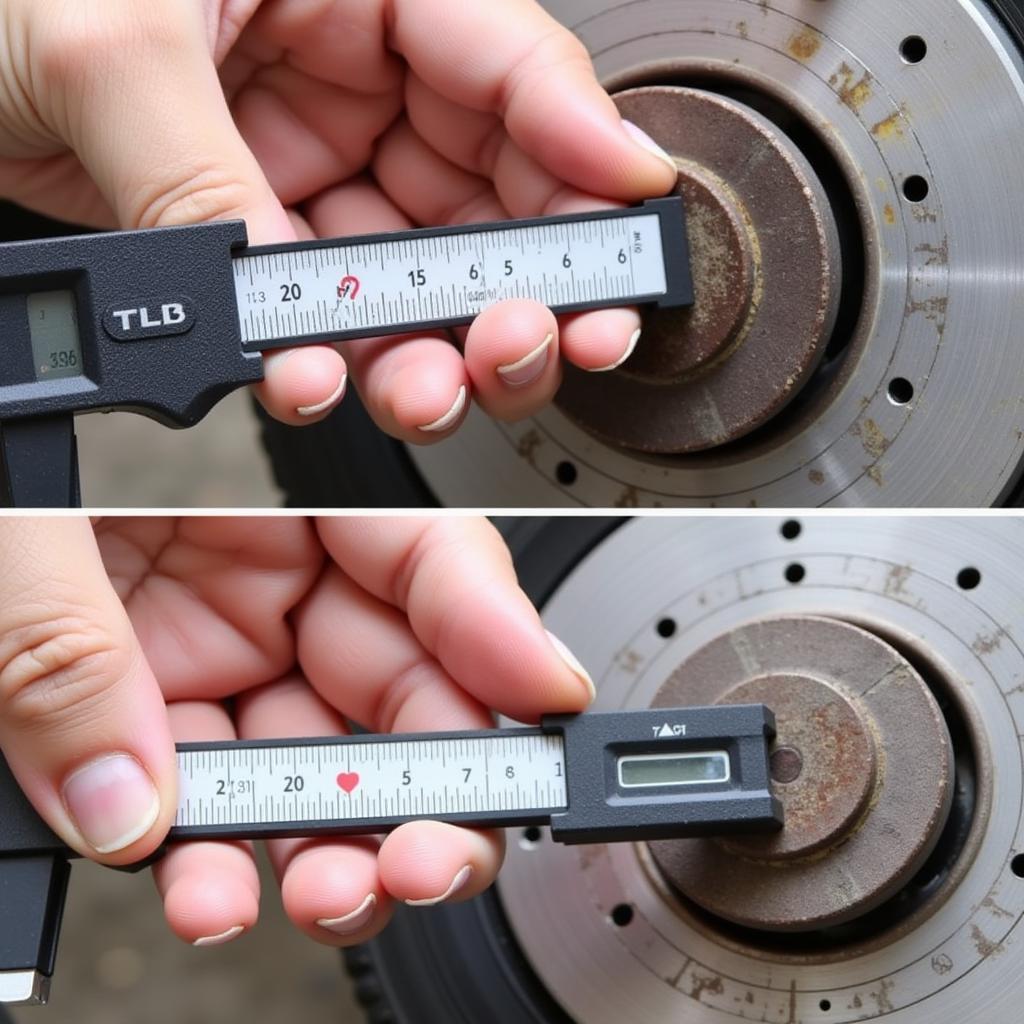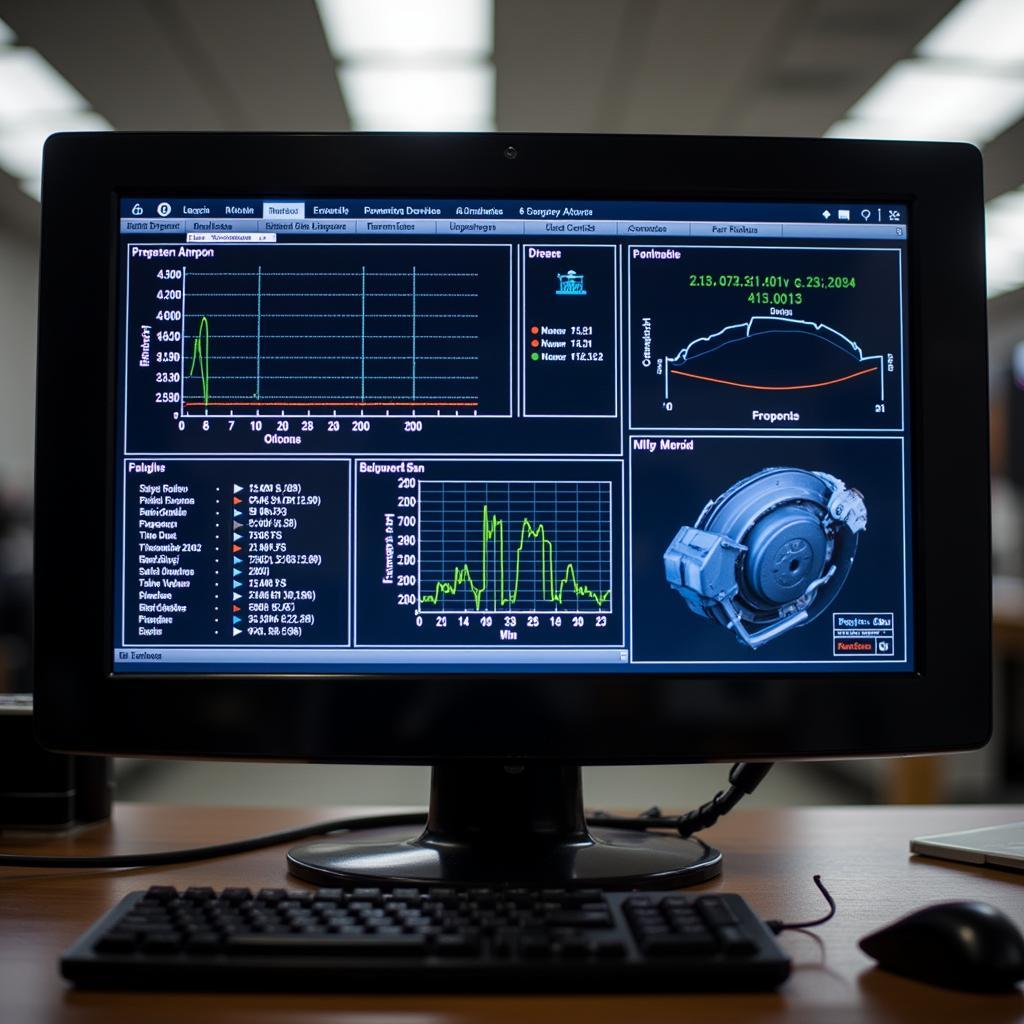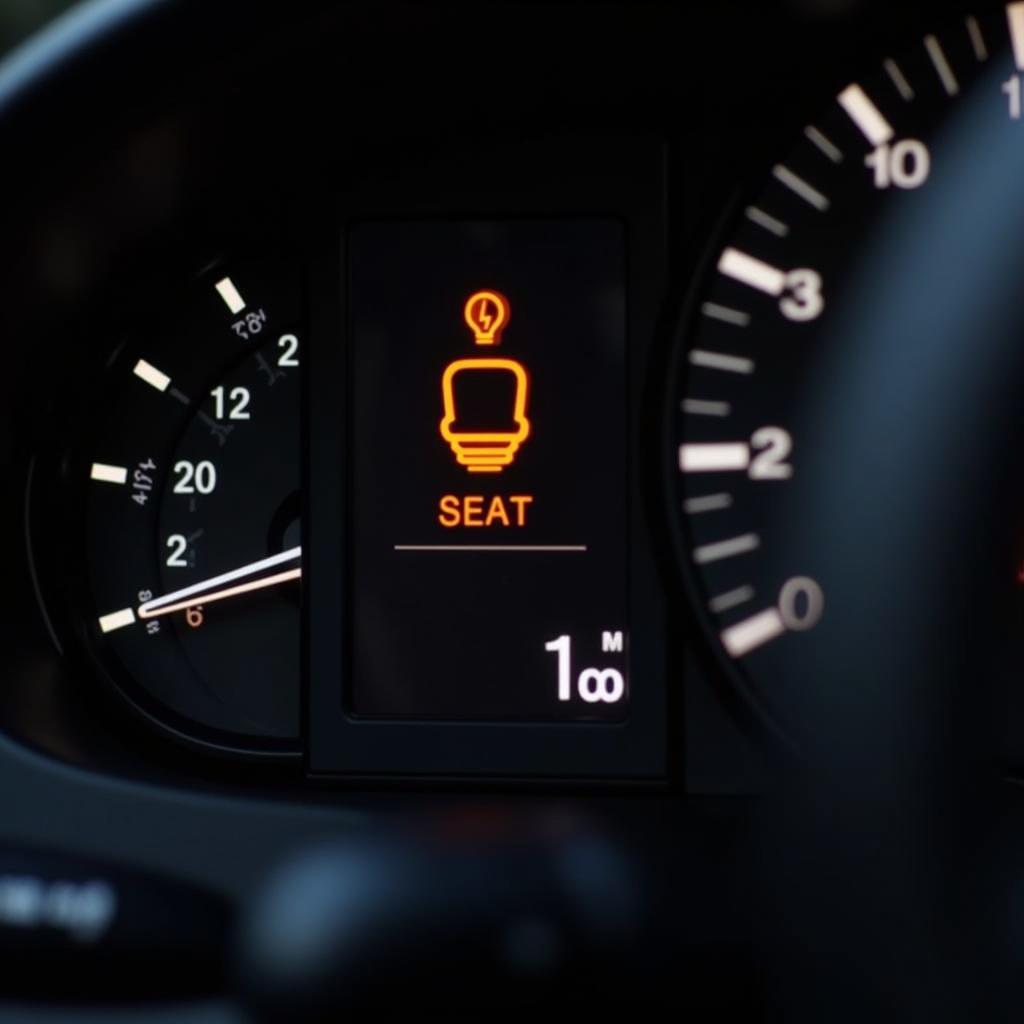The brake pads warning light, a small but crucial indicator on your dashboard, illuminates to signal potential issues with your braking system. Understanding the brake pads warning light meaning is essential for maintaining vehicle safety and preventing costly repairs. This article will delve into the various reasons behind this warning light, how to diagnose the problem, and what steps to take to resolve it.
Understanding the Brake Pads Warning Light
The primary function of the brake pad warning light is to alert you when your brake pads are worn down and require replacement. Most vehicles use a sensor embedded within the brake pad material. When the pad wears down to a certain level, this sensor comes into contact with the brake rotor, completing a circuit and illuminating the warning light. Ignoring this warning can lead to severe damage to your rotors, calipers, and other braking components.
Other Reasons for the Warning Light
While worn brake pads are the most common culprit, other factors can trigger the brake pad warning light:
- Low Brake Fluid: Insufficient brake fluid can also activate the warning light. This could indicate a leak in the brake lines or a problem with the master cylinder.
- Faulty Sensor: The brake pad wear sensor itself can malfunction, triggering the light even if the pads are in good condition.
- ABS Issues: In some cases, problems with the Anti-lock Braking System (ABS) can illuminate the brake pad warning light. This typically requires professional diagnostics.
- Electrical Issues: Wiring problems or a faulty dashboard indicator light can also cause the warning light to come on.
Diagnosing the Problem
When the brake pads warning light illuminates, it’s crucial to diagnose the issue promptly. Start by checking your brake fluid level. If it’s low, top it off and monitor it closely for further leaks. Next, visually inspect your brake pads. If they appear thin or worn, it’s likely time for a replacement.
Checking the Brake Pad Sensor
You can also check the brake pad sensor itself. Locate the sensor wire connected to the brake caliper and inspect it for damage or disconnection. If the wire is damaged, it will need to be replaced.
 Checking Brake Pad Thickness with a Caliper
Checking Brake Pad Thickness with a Caliper
Resolving the Issue
If your brake pads are worn, it’s essential to replace them immediately. This is a relatively straightforward task that can be done at home with basic tools, or by a professional mechanic. If you’re uncomfortable working on your brakes, it’s always best to consult a professional. Addressing low brake fluid requires identifying and fixing the leak, which may involve replacing brake lines or components within the braking system. If you suspect a faulty sensor or ABS issue, it’s recommended to seek professional diagnostics and repair.
Remote Diagnostics and Software Solutions
Modern vehicles often require specialized software and diagnostic tools to identify and resolve complex braking system issues. Remote diagnostics and software solutions can offer significant advantages in these situations. For example, remote diagnostics can pinpoint the exact problem area within the braking system, streamlining the repair process and saving valuable time and money. Furthermore, software updates and calibrations can often be performed remotely, eliminating the need for a physical visit to a repair shop.
“Remote diagnostics has revolutionized the way we approach vehicle repairs. It allows us to quickly and accurately identify the root cause of a problem, leading to more efficient and effective solutions,” says John Smith, Automotive Electrical Engineer specializing in remote diagnostics.
Conclusion
Understanding the brake pads warning light meaning is paramount for safe and responsible vehicle ownership. Regularly checking your brake fluid levels, inspecting your brake pads, and addressing warning lights promptly can prevent significant and costly damage to your braking system. With the advancements in remote diagnostics and software solutions, addressing these issues is becoming increasingly convenient and efficient, ensuring your vehicle stays safe and reliable on the road. Don’t ignore that little light – it’s trying to tell you something important!
 Remote Diagnostics Software Interface
Remote Diagnostics Software Interface
“Proactive maintenance is key. Addressing brake issues early not only saves money but, more importantly, ensures your safety and the safety of others on the road,” adds Jane Doe, Lead Technician at a leading automotive repair facility.
FAQ
-
What should I do if the brake pads warning light comes on? Immediately check your brake fluid and visually inspect your brake pads. If the issue isn’t readily apparent, consult a professional mechanic.
-
Can I drive with the brake pads warning light on? It’s not recommended. Driving with worn brake pads can severely damage your braking system and compromise your safety.
-
How often should I replace my brake pads? Brake pad lifespan varies depending on driving habits and vehicle type. Consult your vehicle’s owner’s manual for recommended replacement intervals.
-
How much does it cost to replace brake pads? The cost varies depending on the vehicle make and model, as well as the type of brake pads used.
-
What is the difference between the brake pads warning light and the ABS light? The brake pads warning light specifically indicates worn brake pads or low brake fluid. The ABS light signals a problem with the Anti-lock Braking System.
-
Can remote diagnostics fix my brake pads? Remote diagnostics can identify the problem, but physical repairs or replacements will still be necessary for worn pads or other physical components.
-
How can I find a qualified technician for remote diagnostics? Many dealerships and repair shops now offer remote diagnostic services. Research and choose a reputable provider with experience in this technology.


